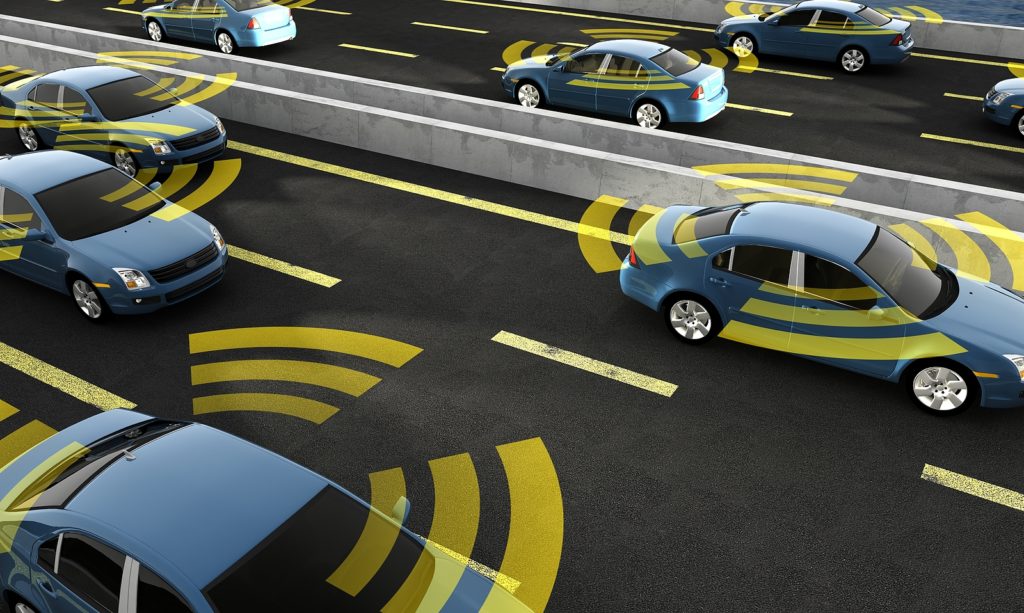
A research team from The Ohio State Center for Automotive Research (CAR) is constructing a dedicated platform for cyber security testing in an autonomous vehicle (AV). The Mobility Cyber Range (MCR) platform will be vigorously tested to pinpoint potential cyber security vulnerabilities in AVs. This testing will help establish safety and security standards and best practices for the technology.
The research pilot will deploy a minivan dubbed “CyberCAR.” This minivan is equipped with the NVIDIA DRIVE AGX Pegasus AI compute platform, which allows for level 4 autonomous driving, meaning that the vehicle can drive itself even when a human driver does not intervene when necessary. The beginning phase of the project will focus on how to establish standards and recommendations for best practices in AV safety and cyber security. From there, the researchers will continue to look into the safety and security of autonomous vehicles. The project will also serve as an important educational tool for the next generation of AV researchers who need to understand cyber security – a crucial challenge to overcome for AVs to become a reality.
“We are aiming to generate a workforce that understands these safety and security challenges, as well as one that is familiar with the DRIVE platform and equipped with the right AV skill set for success,” Qadeer Ahmed, associate professor of research at the Departments of Mechanical and Aerospace Engineering, and Electrical and Computer Engineering, and associate fellow of CAR, told the NVIDIA blog.
The Need for Vehicle-to-Vehicle (V2V) Communication Standards
While safety and cyber security standards and regulations addressing autonomous vehicles are starting to take shape, communication standards between these vehicles have yet to be adequately addressed. In 1999, 5.9 GHz spectrum, a 75 MHz band, was reserved for V2V communication. Over the next 20 years, the U.S. National Highway Traffic Safety Administration (NHTSA), car makers, and device manufacturers established the Dedicated Short-Range Communications (DSRC) standard, which allows for direct communication between two DSRC-enabled devices without depending on a middleman such as a cellular network. A competing standard, Cellular-Vehicle-to-Vehicle (C-V2V), operates on a cellular network.
While the standards can support communications between AVs, they are far from ideal. The DSRC provides fast communication and works in locations that lack cellular coverage. However, it works less accurately when two vehicles are speeding and out of range from each other. The C-V2V standard allows for communication between fast-moving vehicles, but has limited capabilities in remote locations.
Due to a proliferating number of unauthorized WiFi enabled devices, the 5.9 GHz spectrum also lacks adequate bandwidth for transportation. There are far fewer connected vehicles that rely on this spectrum, so their need has been seen as less important.
Policy can help solve this, but more work needs to be done. In 2019, the U.S. Federal Communications Commission (FCC) Chairman Ajit Pai announced a plan to carve out 45 MHz at the lower end of the band for Wi-Fi, 20 MHz for C-V2V, and possibly the top 10 MHz for C-V2V or DSRC. The FCC approved the proposal in November 2020. While the plan may speed up a resolution between the competing DSRC and C-V2V standards, it also portions out less spectrum for transportation.
While standards for cyber security and safety around AVs are ramping up, there is clearly a need for increased focus on V2V. Given their potential to transform society – such as revolutionizing the transportation industry and drastically reducing accidents – it’s vital that VSV standards are taken seriously.
Focusing on Security and Safety
Prepare your organization to better comprehend the security aspects of the automotive industry. An online five-course program, Automotive Cyber Security: Protecting the Vehicular Network aims to foster the discussion on automotive cyber security solutions and requirements for both intelligent vehicles and the infrastructure of intelligent transportation systems.
Contact an IEEE Content Specialist today to learn more about getting access to these courses for your organization.
Interested in the course for yourself? Visit the IEEE Learning Network.
Resources
Sagar, Ritika. (9 July 2021). How Researchers Are Solving Cybersecurity Issues In Autonomous Vehicles. Analytics India Magazine.
Seamans, Robert. (22 June 2021). Autonomous vehicles as a “killer app” for AI. Brookings.
Burke, Kaite. (11 June 2021). To Infinity, and Beyond: Ohio State University Builds AV Cybersecurity Platform for Long-Term Research on NVIDIA DRIVE. NVIDIA.


[…] obstacle for autonomous systems is knowing how to move together in busy intersections. A team of researchers from MIT recently discovered a machine learning […]